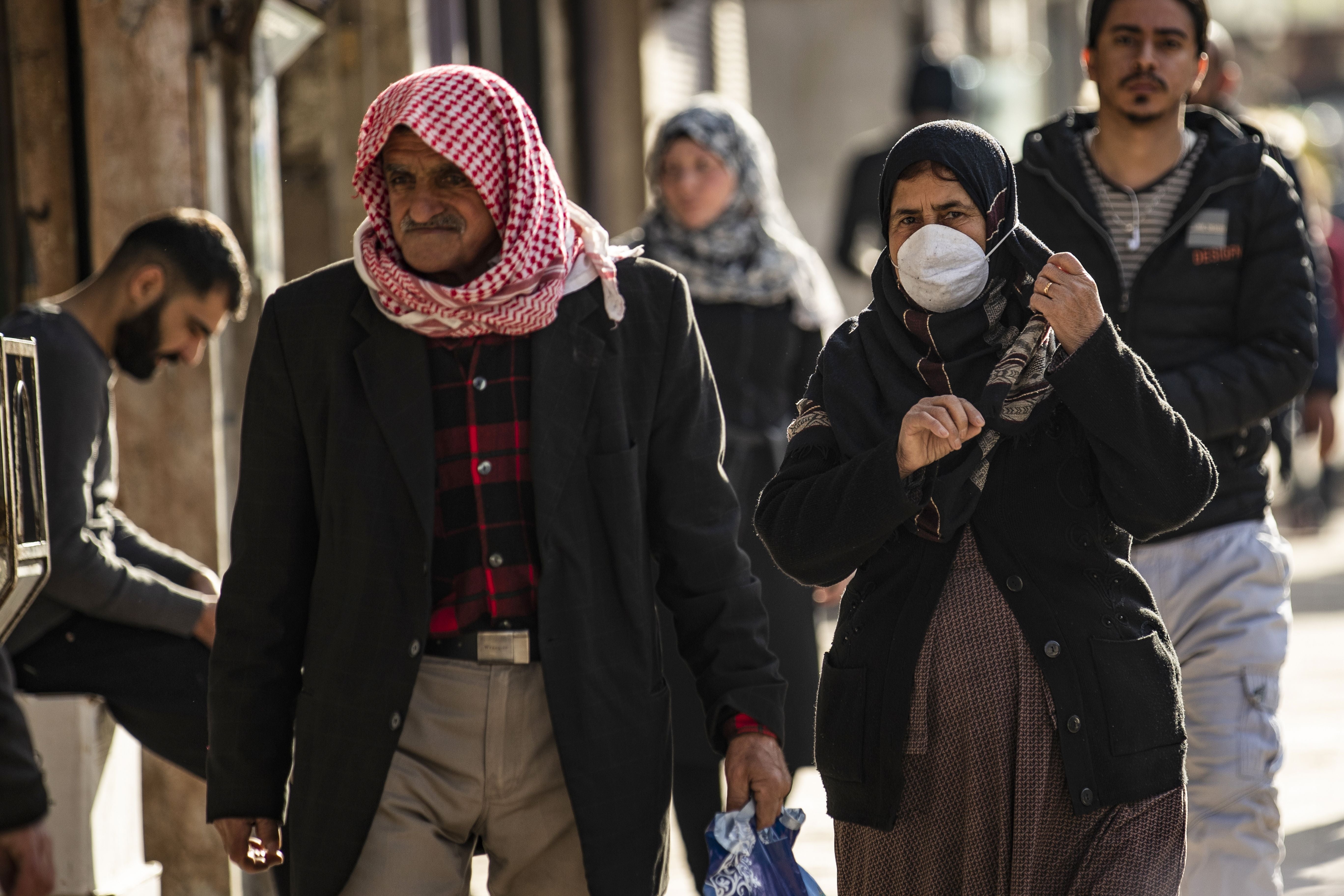Crisis and conflict in world’s poorest nations spark major fears over vaccine rollout for most vulnerable
Special report: While high-income countries have already secured billions of doses, access to supplies of the Covid vaccines for the world’s poorest and most vulnerable populations remains uncertain. Samuel Lovett reports


An end to the pandemic may now be in sight for the Western world, but for those countries that have found themselves at the back of the vaccine queue, the road ahead remains bleak and fraught with uncertainty.
Outside of the northern hemisphere, which has hoarded the majority of doses for the most promising Covid-19 jabs, there is little indication as to when the world’s poorest and most vulnerable populations will be able to access their share of the supplies.
Instead, governments across Africa and the Middle East have been forced to watch as countries such as the UK begin to scale up their nationwide vaccination programmes, raising hope that the worst of the crisis within their own borders will have passed by summer of next year.
If campaigners’ worst fears are realised, nine out of 10 people in 70 low-income countries are unlikely to be vaccinated in 2021, owing to the high number of stocks that have already been secured by rich nations representing just 14 per cent of the world’s population.
“We're seeing this situation where available global supply is being bought up till end of 2021,” Roz Scourse, a policy adviser at Medecins Sans Frontieres (MSF), tells The Independent. “You could see a situation where some of the poorer countries therefore don’t get access for months or years. That is the reality.”
However, securing vaccine supplies is just one problem among many that those lower- and middle-income nations of the ‘Global South’ are facing. In conflict-torn countries such as Yemen, Syria and Afghanistan, the usual challenges of access and distribution take on new complexities and demands that simply do not exist in the West.
While the NHS must contend with keeping doses cold enough, authorities in these nations will be expected to navigate hostile terrains and violent geo-politics, while relying on decimated health services, to ensure the delivery of stocks.
“The main challenges are related to the conflict situation,” Aitor Zabalgogeazkoa, acting head of MSF’s Middle East unit, tells The Independent. “The land supply chains are disrupted by active warfare, armed attacks, checkpoints and the transit of medical materials and vaccines require lengthy negotiations between the authorities controlling each area.”
In Afghanistan and Yemen, ongoing disputes between armed groups could hinder the flow of supplies throughout the two countries, or altogether prevent doses from reaching vulnerable communities.
Organisations such as the Taliban, which controls large sections of territory in Afghanistan, are both interested in and suspicious of the Covid-19 vaccines, says Stephanie Lord, a programmes director in Kabul for Save the Children.
“The vaccine is probably quite interesting to a lot of people and valuable to a lot of these groups,” she says. “Organisations like our own will have to negotiate with the armed opposition groups to move supplies around the country.”
I hope I’m wrong, but I can’t see vaccines being properly rolled out beyond the northern hemisphere until autumn of next year
Outbursts of violence and deliberate targeting of vaccination services could similarly disrupt efforts to administer any doses that are delivered to these countries. “We see a lot of attacks on health facilities which is completely unacceptable, not only for the loss of lives but it deters people from accessing these services,” Lord says.
Earlier this year, a maternity ward run by MSF in the Afghan capital, Kabul, was subject to a horrifying attack that saw 24 women, children and babies killed after gunmen entered the facility and opened fire. No one claimed responsibility for the killing, though MSF said at the time it had been deliberate and warned that similar attacks could occur in the future.
Against this backdrop of bloodshed and turbulence, which regularly spills over into other walks of life in Afghanistan, health officials will have to do what they can to reach the most at risk communities and ensure doses of the vaccine can be safely administered to the 17 million people living in conflict-affected areas.
In countries beset by such violence, hospitals, medical centres and health services vital to the implementation of an effective vaccination programme have been reduced to rubble. Over the past year and a half, at least 85 health facilities in the north-west of Syria were forced to close or limit their operations after being attacked.
Further east, in Afghanistan, a third of the population does not have access to a functional health centre within two hours of their home, according to the International Rescue Committee (IRC).
And in Syria, the lack of an operational health system means 19.1 million people are living in hard-to-reach areas beyond the reach of primary care services, while more than half of the country’s facilities have been left in ruin because of the war.
“There's the physical destruction of the infrastructure but there's also a lot of human resources that are required to run any remaining facilities,” says Stephanie Puccetti, the IRC deputy director for Yemen.
“The health system is largely nonfunctional in parts of the country. You have NGOs and agencies stepping in some cases to provide some sort of service, but it remains a huge challenge.”
This will make the widespread delivery of doses near impossible when national authorities eventually turn their attention to Covid vaccinations, says Dr Samiha Bataher, a physician in Yemen. Focus instead remains pinned on the ongoing famine crisis, though past attempts to deliver polio jabs highlight the challenges posed by a vaccine rollout of any kind.
"Vaccines are often available in larger urban areas or in governorate capitals, but not in smaller health facilities in remote areas,” Dr Bataher says. "People living in rural areas often need to travel up to four hours to reach a health facility which has vaccines available.
“The cost of transport for people in rural areas is also prohibitive, and families describe making a choice between paying for transport to reach a health facility or using that money to feed their family that day. They almost always, understandably, choose the latter.”
Even in those areas of Yemen where vaccines for polio, diphtheria or measles are readily available, there are many who do not trust them. “There is a lack of understanding of how vaccines function and some Islamic groups discourage their use as they are seen as a Western imposition,” Dr Bataher says.
As with the UK and other countries, vaccine storage is another obvious issue – although the widespread lack of suitable refrigeration across the Global South presents an all together different challenge.
According to the IRC, 75 per cent of vaccine fridges across the African continent are already full, raising questions of where doses of the Covid jabs will be stored. “There are only certain number of fridges and human resources that you have in many settings, and in particular in these very devastated settings,” Michelle Gayer, health director at the IRC, tells The Independent.
Families describe making a choice between paying for transport to reach a health facility or using that money to feed their family that day. They almost always, understandably, choose the latter
In Afghanistan, Lord warns that patchy electricity supplies will hamper efforts to keep the vaccine vials at the correct temperature. “It’s very challenging for most households in Kabul to maintain electricity, let alone those in the more rural areas,” she says, adding that it will be immensely difficult to sustain the vaccine cold chains across the country.
Mobile health clinics have been touted as one means of delivering the vaccine to populations in these conflict-torn countries. Doses will be kept in fridges within these moving units and administered by healthcare professionals affiliated with Save the Children, MSF and other health organisations.
“I think we would use both static and mobile facilities – but the latter are one of the best options we’ve got in Afghanistan,” Lord says. “We already administer vaccines through our mobile clinics, so imagine they would be a good modality for the Covid jabs.”
Gayer insists that these countries need to set up vaccine task forces similar to the one established in the UK. “In Yemen, Syria, and lots of populations that are hard to reach, we really need some kind of national task force for allocation,” she says. “I’ve not seen anything like this being set up or discussed. Each country has to be transparent in how they prioritise who gets it first.”
There is some hope that not all those caught in the globe’s most pressing humanitarian crises will be completely overlooked. Mohamed Al-Taher, a UN worker at the Zaatari camp in Jordan, home to roughly 80,000 refugees, says the national government has been proactive in reaching and exploring how best to secure and administer doses.
“The priority for the vaccine depends on the number that we will receive,” he says. “It'll be for the medical staff working in the camp along with the elderly people. It depends on the number that are allocated to Zaatari.
“The state of the health services in the camp are at a good level and we have a very good co-operation with the ministry of health, who are following up on the refugees here.”
The Jordanian government announced last week that it expected to start receiving doses in January and February, giving Al-Taher hope that his camp will have access to supplies shortly afterwards.
But despite such optimism, it does little to paper over the cracks which so many of the world’s poorest countries and populations are now falling through. The vast majority of people living in lower-income nations, and particularly those devastated by conflict and war, face a long wait to secure protection against Covid-19.
As the rest of the world starts its slow journey back to normality, these countries will be forced to grapple with continuing death and suffering, further disruption to every-day life and prolonged economic hardship. It is a burden that their people and communities will be unable to carry.
“There’s a long way to go,” Gayer says. “I hope I’m wrong but I can’t see vaccines being properly rolled out beyond the northern hemisphere until autumn of next year. It should be a huge worry for the whole world.”


Join our commenting forum
Join thought-provoking conversations, follow other Independent readers and see their replies
0Comments